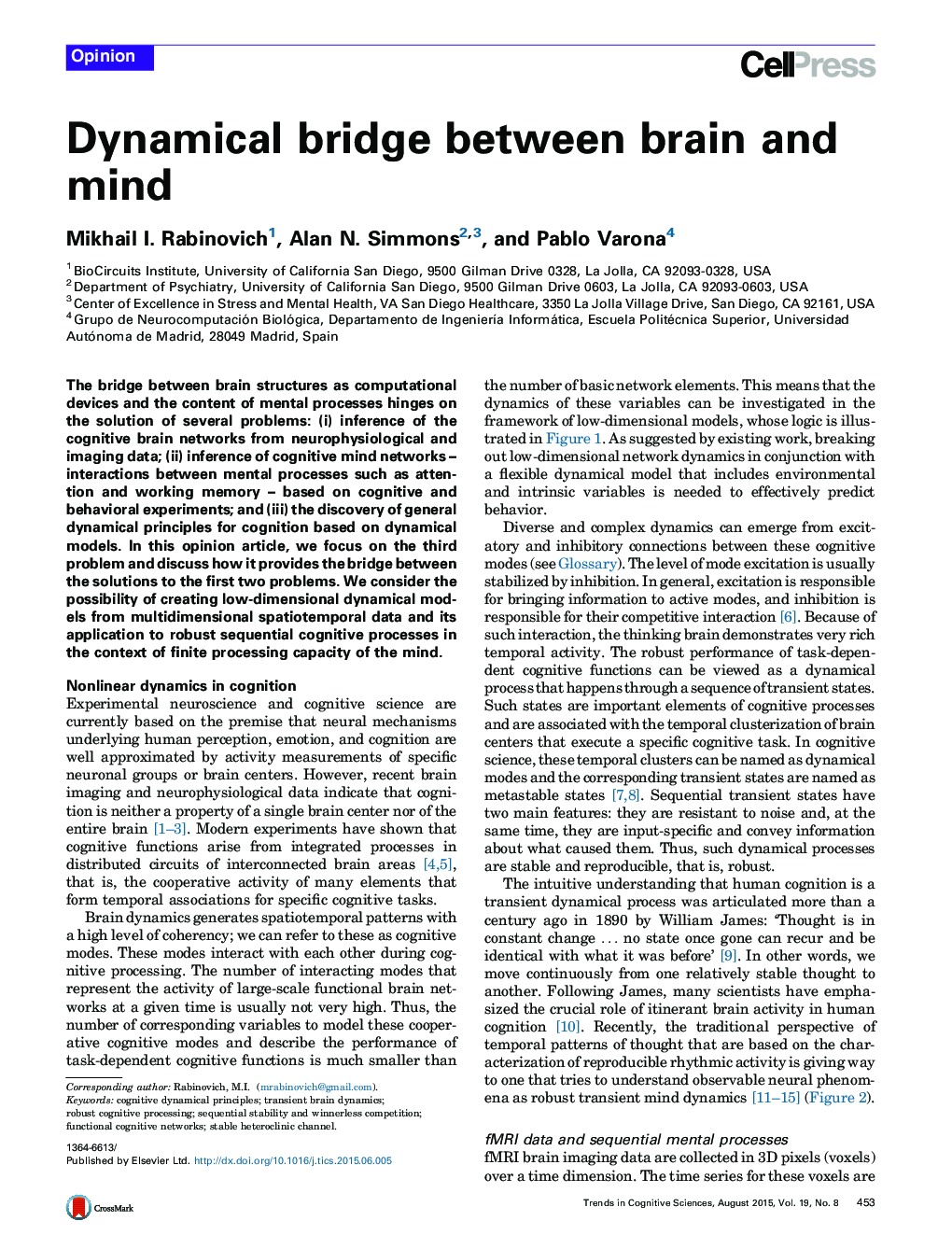| Article ID | Journal | Published Year | Pages | File Type |
|---|---|---|---|---|
| 141390 | Trends in Cognitive Sciences | 2015 | 9 Pages |
•Cognition can be described by transient activity of low-dimensional dynamical models.•Inhibition and winnerless competition are components of robust cognition.•We connect sequential stability with finite capacity and prediction in the mind.
The bridge between brain structures as computational devices and the content of mental processes hinges on the solution of several problems: (i) inference of the cognitive brain networks from neurophysiological and imaging data; (ii) inference of cognitive mind networks – interactions between mental processes such as attention and working memory – based on cognitive and behavioral experiments; and (iii) the discovery of general dynamical principles for cognition based on dynamical models. In this opinion article, we focus on the third problem and discuss how it provides the bridge between the solutions to the first two problems. We consider the possibility of creating low-dimensional dynamical models from multidimensional spatiotemporal data and its application to robust sequential cognitive processes in the context of finite processing capacity of the mind.
